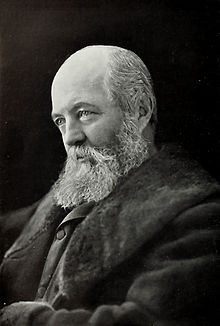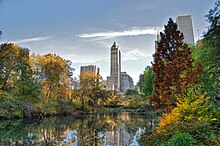User:Nrmontes94/sandbox


Beautification
[edit]Beautification is the term used when trying to improve cities and/ or neighborhoods by adding different forms of detailing to give it a more appealing look. The act is done when renovating parts or whole cities in the efforts to add more appeal for people coming in or to give the city and/or a new makeover. By doing this, the value of the location tends to make the value go up. Beautification has been on the rise since the late 20th century until now.
Appeal
[edit]Beautification is mostly done in urban areas or areas that are not well kept to the surrounding area. This is seen in urban cities to create a more natural scenery in a metropolitan area, which can appeal to not only residents, but potentially bring in some form of tourism. This trend can potentially increase the value of the area and make it a sought-after area.
This can make beautification a very common tactic to use in real estate since it can make an urban setting more desirable and more sought after. It is trying to make a metropolitan area have some sort of aspect of a more suburban setting, which, again, can cause a thriving real estate market.
Forms
[edit]The process of beautification has been around for decades as more urban cities blossomed from late 20th century to now. There can be small examples of the process throughout different cities to either take up empty spaces or lots, or on a grander scale like Central Park in New York City. Most forms of beautification tend to cater more to the city and some create different forms into gardens to cater for the neighborhood where it is done i.e in 2014 there were multiple empty lots in Chicago that were sold off and most were turned into community gardens. This created a sense of closer community. Central Park was also created to add greenery to a urban setting, with also the idea in mind that it can help offset the carbon dioxide that is released into the air in urban settings. It gave a small oasis In a busy city while also helping its environment.
Negatives
[edit]Creating a beautiful scenery in already busy setting can potentially bring in tourism and make the area desirable creating economic growth of the city. This can increase overall pricing discrepancies which tends to cause forms of gentrification in blooming or already fully developed cities. This can lead to the misplacing of people who have been pushed out of the area due to the increase in price of living. As more affluent people move the chances of more forms of beautification being completed rises, which causes an influx of economic growth and price increase. Many cities, like New York City, are trying to counteract this by making any new form of housing more affordable to bring misplacement to a minimum, while also continuing to do forms beautification to the city.
References
[edit]Birch, & Wachter, S. M. (2008). Growing greener cities urban sustainability in the twenty-first century. University of Pennsylvania Press.
Stevens, Sara. Developing Expertise : Architecture and Real Estate in Metropolitan America. Yale University Press, 2016.
Florida, Richard The Beauty Premium: How Urban Beauty Affect Cities’ Economic Growth Bloomberg Press, 2019
Stewart, William P., et al. “Resident-Led Beautification of Vacant Lots That Connects Place to Community.” Landscape and Urban Planning, vol. 185, 2019, pp. 200–09, https://doi.org/10.1016/j.landurbplan.2019.02.011.
Smith, Neil. The New Urban Frontier Gentrification and the Revanchist City. Routledge, 1996.

